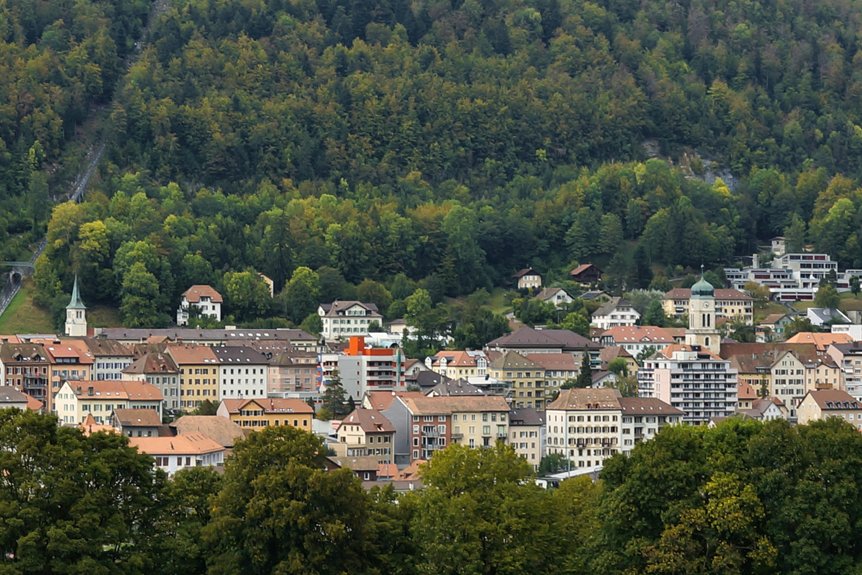When hiking the Troodos UNESCO heritage churches, you’ll need sturdy boots, modest clothing, and cultural respect. Plan your route carefully, carry emergency supplies, and prepare for steep mountain trails. Ask permission before photographing interiors, move quietly in sacred spaces, and protect delicate frescoes by turning off camera flash. Your spiritual journey through Byzantine architecture awaits-each step reveals another layer of Cyprus’s rich ecclesiastical tapestry.
Key Takeaways
- Wear sturdy hiking boots and appropriate mountain hiking attire to safely navigate the challenging Troodos Mountain terrain and church trail routes.
- Plan your route meticulously, studying trail maps and researching specific UNESCO church locations to maximize cultural exploration and minimize navigation challenges.
- Respect sacred spaces by asking permission before photographing, dressing modestly, and maintaining quiet reverence during visits to Byzantine-era churches.
- Carry essential hiking supplies including water, high-energy snacks, emergency first-aid kit, and trekking poles to ensure safe mountain church exploration.
- Research church photography restrictions in advance, understanding that many historical sites prohibit interior photography and require sensitive, respectful engagement with cultural heritage.
Navigate the Historic Byzantine Trail
As you wind through the ancient pathways of the Troodos Mountains, the Byzantine Trail emerges as a living museum of Cyprus’s rich religious heritage. You’ll navigate historic hiking trails that connect remarkable UNESCO churches, each step revealing centuries of artistic and architectural brilliance. The trail’s winding mountain paths invite you to explore meticulously preserved 12th-century frescoes at iconic sites like Panagia tis Asinou and Agios Nikolaos tis Stegis.
Prepare for a 2-3 hour journey traversing stunning Cypriot landscapes, where traditional villages dot the mountainous terrain. Thorough route planning guarantees you’ll maximize your exploration of these extraordinary Troodos UNESCO churches. Wear sturdy hiking boots, carry water, and bring a camera to capture the breathtaking vistas and intricate Byzantine art that await you. The trail offers more than a simple walk-it’s a profound cultural pilgrimage through Cyprus’s spiritual and artistic history, inviting you to step back in time and witness architectural treasures nestled in pristine mountain settings.
Preserve Sacred Church Photography Etiquette
How can you respectfully capture the sacred beauty of Troodos’ Byzantine churches without disrupting their spiritual essence? When photographing these UNESCO heritage sites, you’ll need to follow strict cultural guidelines that honor the sanctity of these ancient spaces.
Always ask permission before taking photographs inside churches. Many Byzantine sites prohibit interior photography to protect delicate frescoes and maintain the spiritual atmosphere. If photography is permitted, turn off your camera’s flash, which can damage centuries-old artwork and disrupt the serene environment.
Dress modestly when visiting these sacred spaces. Cover your shoulders and knees as a sign of respect. Move quietly and slowly, avoiding sudden movements that might disturb worshippers or other visitors. Be mindful of ongoing religious services or private moments of reflection.
Prepare for Mountain Hiking Challenges
While Byzantine churches dot the Troodos landscape, reaching these sacred sites demands robust hiking preparation and mountain-specific skills. You’ll need to equip yourself with sturdy hiking boots, moisture-wicking layers, and trekking poles to navigate the steep, winding mountain trails effectively.
The terrain challenges even experienced hikers, with significant elevation changes and unpredictable mountain weather. Expect cooler temperatures and rapid climate shifts that can transform your hiking conditions within minutes. Your physical fitness will be tested, so build endurance and strength before attempting these demanding routes.
Hydration and nutrition are critical when exploring these remote church locations. Pack sufficient water, high-energy snacks, and emergency supplies to sustain yourself during long treks. A well-prepared hiker can safely access these UNESCO World Heritage sites, transforming a challenging mountain journey into an unforgettable cultural exploration of Cyprus’s ecclesiastical treasures.
Frequently Asked Questions
Are These Churches Still Active for Religious Services Today?
You’ll find these historic churches are still vibrant places of worship, actively serving local Orthodox Christian communities. Despite their UNESCO status and ancient architectural significance, these Troodos mountain churches haven’t become mere museums. They’re living spiritual spaces where regular religious services continue, preserving centuries-old traditions. Local congregations maintain these sacred sites, ensuring that ancient Byzantine religious practices remain deeply connected to contemporary spiritual life in Cyprus.
How Old Are the Oldest Frescoes in These Churches?
Buckle up, time traveler! The oldest frescoes in the Troodos churches date back to the Byzantine era, specifically from the 11th century. You’ll be amazed by these stunning wall paintings that have survived nearly a millennium. They’re masterpieces of religious art, depicting saints, biblical scenes, and Byzantine iconography with incredible detail and vibrant colors that have remarkably preserved their spiritual and artistic integrity through centuries.
Do Local Communities Maintain These Churches or Government Organizations?
Local communities and the Cyprus Department of Antiquities collaborate closely to preserve these historic Byzantine churches. You’ll find that villagers take immense pride in maintaining their spiritual heritage, often volunteering for restoration and cleaning. The government provides technical expertise and funding, while local priests and community elders guarantee these sacred spaces remain living monuments, deeply connected to their cultural roots and spiritual traditions.
Can Visitors Enter All Byzantine Churches or Are Some Restricted?
Sacred thresholds whisper tales of faith, where stone walls breathe centuries of devotion. You’ll find most Byzantine churches open, but some require respectful preparation. While many welcome visitors, certain sanctuaries restrict entry during religious ceremonies or require modest dress. You’ll need to cover shoulders and knees, and some churches might request a small donation. Always approach with reverence, understanding these aren’t just museums, but living spiritual spaces.
What Historical Significance Do These Churches Hold for Cyprus?
You’ll discover these churches represent profound cultural treasures embodying Cyprus’s Byzantine Christian heritage. They’re not merely architectural monuments, but living testimonies of medieval spiritual and artistic expressions. These UNESCO-protected sites reveal centuries of religious traditions, reflecting the island’s complex historical narrative of faith, resistance, and cultural preservation. Each painted wall and carved stone tells a story of resilience, connecting contemporary Cypriots to their rich ancestral roots.
Conclusion
You’ll treasure the spiritual journey through Cyprus’s Troodos Mountains, where each step reveals centuries of Byzantine artistry and mountain resilience. Imagine hiking the Metamorphosis trail near Platres, where a 12th-century church whispers stories of faith and preservation. By respecting local customs, preparing carefully, and embracing the landscape’s sacred rhythms, you’ll transform a simple trek into a profound cultural pilgrimage that connects you deeply with Cyprus’s rich ecclesiastical heritage.

Meet Natalie, who has lived on Cyprus for the last 10 years. She loves exploring the beautiful nature of the island, like quiet forests and untouched beaches. Natalie has lots of cool experiences to share. Join her as she talks about her adventures in Cyprus.

